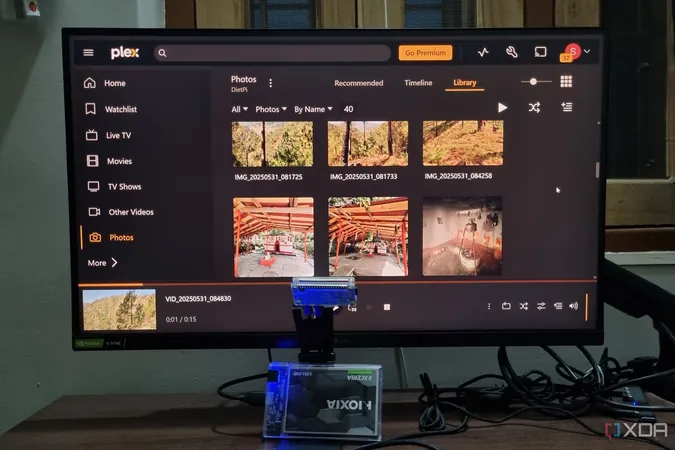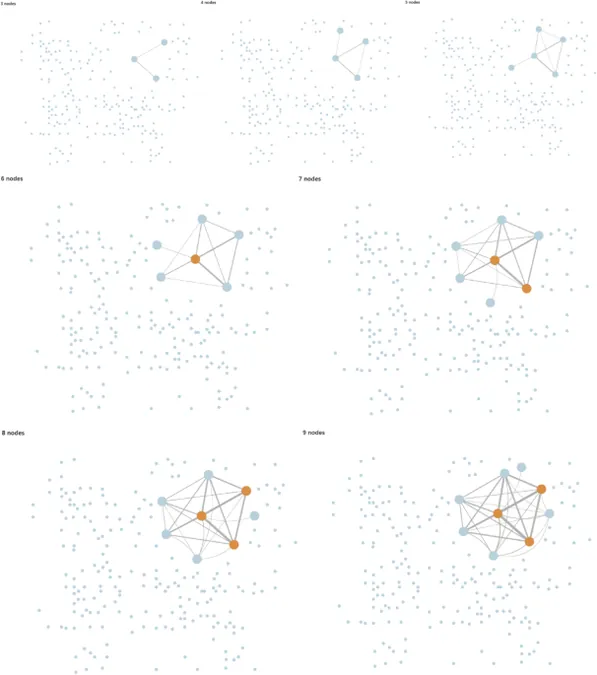
5 Crucial Lessons I Learned After Choosing Plex Over Jellyfin for My NAS
2025-08-03
Author: Amelia
In today's digital age, building your own NAS has never been more appealing, especially with growing concerns about data privacy and surveillance. When I first dived into the world of self-hosting, I quickly decided to use Plex for managing my media library. However, after experiencing the benefits of self-hosting, I can't help but regret not opting for Jellyfin right from the start.
Initially, Plex ruled the self-hosted media server landscape, offering an easy setup for beginners and a comprehensive user-friendly experience. But today, it seems to have lost its luster, cluttered with ads, distracting recommendations, and key features locked behind a Plex Pass subscription. This shift away from user-centered design has prompted me to seriously consider a transition to Jellyfin, a free and open-source alternative that brings back the essence of what a personal media server should be.
Jellyfin's Freedom vs. Plex's Restrictions
One major realization is the stark contrast between Jellyfin and Plex regarding accessibility and philosophy. Jellyfin stands proud as Free and Open Source Software (FOSS), allowing everyone to inspect, modify, and contribute to its code. Plex, on the other hand, has evolved into a proprietary platform. What started as a free solution based on XBMC (Kod) has morphed into a for-profit model that prioritizes corporate interests over user experience. Choosing Jellyfin offers peace of mind, knowing there are no hidden agendas or data mining practices at play. If only I had been aware of this key difference sooner!
Plex's Interface: A Cluttered Experience
While Plex's homepage overwhelms users with ads and recommendations, Jellyfin presents content in a straightforward manner. Plex's constant ability to bury user content beneath a sea of suggested services detracts from the whole self-hosting concept. Yes, there are settings to minimize distractions, but they are often hidden away, making it a chore to access your own library. In contrast, Jellyfin showcases only your content by default, which simply feels more respectful to you as a user.
Remote Access: The Cost of Freedom
The allure of self-hosting lies in the promise of remote streaming—watching media anywhere you go. Plex dangles this dream but delivers a frustratingly limited experience for free-tier users. The seamless access and hardware transcoding features are locked behind a paywall, forcing many, including me, to consider risking complex configurations like port forwarding. Jellyfin eliminates these barriers altogether, providing full functionality without hidden fees from the get-go.
The Internet Dependency Dilemma
If you think you've fully embraced your Plex server, think again. Plex's reliance on an Internet connection for authentication means that even local streaming can become a nightmare during outages. If you hadn't pre-configured your settings correctly, you might be left stranded without access. Jellyfin, however, doesn't share this flaw—when set up correctly, it allows offline access seamlessly. A local network connection keeps your media accessible, independent of third-party authentication.
App Variety: Plex's Winning Hand
Despite my hesitations about abandoning Plex, I have to acknowledge its standout feature: extensive app support across countless platforms. It boasts dedicated clients for smart TVs, consoles, and mobile devices. Jellyfin, while gaining traction, still doesn't quite match this reach, relying heavily on web browsing and volunteer-driven app development. Still, there are some promising community-built options that resemble Plex in functionality, making Jellyfin an ever-more enticing choice.
In conclusion, my choice of Plex has left me with quite a bit of buyer's remorse. Perhaps if I had done a little more research into the robust offerings of Jellyfin, I would have made a different decision. As data privacy and user experience become ever more critical, Jellyfin could very well be the true champion for self-hosted media.









 Brasil (PT)
Brasil (PT)
 Canada (EN)
Canada (EN)
 Chile (ES)
Chile (ES)
 Česko (CS)
Česko (CS)
 대한민국 (KO)
대한민국 (KO)
 España (ES)
España (ES)
 France (FR)
France (FR)
 Hong Kong (EN)
Hong Kong (EN)
 Italia (IT)
Italia (IT)
 日本 (JA)
日本 (JA)
 Magyarország (HU)
Magyarország (HU)
 Norge (NO)
Norge (NO)
 Polska (PL)
Polska (PL)
 Schweiz (DE)
Schweiz (DE)
 Singapore (EN)
Singapore (EN)
 Sverige (SV)
Sverige (SV)
 Suomi (FI)
Suomi (FI)
 Türkiye (TR)
Türkiye (TR)
 الإمارات العربية المتحدة (AR)
الإمارات العربية المتحدة (AR)